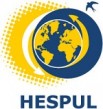Hespul uses satellite data to monitor solar energy production

The Organisation
Hespul is not-for-profit association based in Lyon, France, whose members include several local authorities interested in promoting energy efficiency and renewable energy systems. It was funded in 1991 and currently employs 29 staff. Among its missions, HESPUL acts the Local Energy centre of the Rhône Department (www.infoenergie69.org), in partnership with the national and local governments: the French Environment and Energy Management Agency (ADEME), the Rhône-Alpes region and Rhône department. It also manages the French photovoltaic information centre (www.photovoltaique.info) co-financed by ADEME.
The Challenge
Hespul owns several PV plants, among them the first grid-connected PV system in France, in operation since 1992. Hespul also undertakes monitoring of PV systems as a service to public authorities. Hespul needs to ensure that all PV systems operate properly on the long term for 2 reasons: firstly, in order to make sure energy production reaches the local RES political goals (Agenda 21, Climate Action plans,…). Secondly, in order to sell electricity at the feed-in-tariff so as to pay back the debt contracted to finance the PV system.
It was difficult to have comprehensive and accurate information on potential and output, in the long term and at low cost, especially since most PV systems do not have an irradiation sensor.
The Satellite Solution
Satellite irradiation data is used to assess the expected hourly output of each PV system. The estimated hourly output is compared with actual production data. In case of difference, an alert is sent to Hespul so that the faulty PV system can be repaired as soon as possible. In addition to using this service to monitor its own PV systems, Hespul has developed a subsidiary in order to offer this service to other interested users under the brand Epices.
The Results
Thanks to satellite data, all PV systems are controlled each day to make sure that they operate properly and malfunction is detected very quickly. Through its subsidiary, Epices, satellite data is now used to monitor several PV systems in the Lyon region such as the PV system of the large-scale urban project Lyon-Confluence.
“Satellite is an easy way to assess the hourly irradiation data of many different sites.” Bruno Gaiddon, PV Unit Manager, Hespul

